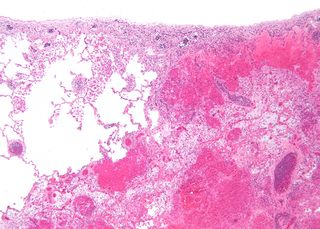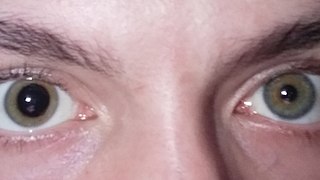Related Research Articles

Neurology is the branch of medicine dealing with the diagnosis and treatment of all categories of conditions and disease involving the nervous system, which comprises the brain, the spinal cord and the peripheral nerves. Neurological practice relies heavily on the field of neuroscience, the scientific study of the nervous system.

Oliver Wolf Sacks was a British neurologist, naturalist, historian of science, and writer. Born in London, Sacks received his medical degree in 1958 from The Queen's College, Oxford, before moving to the United States, where he spent most of his career. He interned at Mount Zion Hospital in San Francisco and completed his residency in neurology and neuropathology at the University of California, Los Angeles (UCLA). Later, he served as neurologist at Beth Abraham Hospital's chronic-care facility in the Bronx, where he worked with a group of survivors of the 1920s sleeping sickness encephalitis lethargica, who had been unable to move on their own for decades. His treatment of those patients became the basis of his 1973 book Awakenings, which was adapted into an Academy Award-nominated feature film in 1990, starring Robin Williams and Robert De Niro.

Infarction is tissue death (necrosis) due to inadequate blood supply to the affected area. It may be caused by artery blockages, rupture, mechanical compression, or vasoconstriction. The resulting lesion is referred to as an infarct (from the Latin infarctus, "stuffed into").

The Moro reflex is an infantile reflex that develops between 28 and 32 weeks of gestation and disappears at 3–6 months of age. It is a response to a sudden loss of support and involves three distinct components:
- spreading out the arms (abduction)
- pulling the arms in (adduction)
- crying (usually)
Abasia is the inability to walk owing to impairment in motor coordination.

Anisocoria is a condition characterized by an unequal size of the eyes' pupils. Affecting up to 20% of the population, anisocoria is often entirely harmless, but can be a sign of more serious medical problems.

The anterior choroidal artery is a bilaterally paired artery of the brain. It is typically a branch of the internal carotid artery which supplies the choroid plexus of lateral ventricle and third ventricle as well as numerous structures of the brain.
Astasia-abasia refers to the inability to either stand or walk in a normal manner. Astasia refers to the inability to stand upright unassisted. Abasia refers to lack of motor coordination in walking. The term abasia literally means that the base of gait is inconstant or unmeasurable. When seen in conversion disorder, the gait is bizarre and is not suggestive of a specific organic lesion: often the patient sways wildly and nearly falls, recovering at the last moment.

John Allan Hobson was an American psychiatrist and dream researcher. He was known for his research on rapid eye movement sleep. He was Professor of Psychiatry, Emeritus, Harvard Medical School, and Professor, Department of Psychiatry, Beth Israel Deaconess Medical Center.

Kenneth M. Heilman is an American behavioral neurologist He is considered one of the fathers of modern-day behavioral neurology.

Daniel Gregory Amen is an American celebrity doctor who practices as a psychiatrist and brain disorder specialist as director of the Amen Clinics. He is a five-time New York Times best-selling author as of 2012.
A somatosensory disorder is an impairment of the somatosensory system.
Repetitive nerve stimulation is a variant of the nerve conduction study where electrical stimulation is delivered to a motor nerve repeatedly several times per second. By observing the change in the muscle electrical response (CMAP) after several stimulations, a physician can assess for the presence of a neuromuscular junction disease, and differentiate between presynaptic and postsynaptic conditions. The test was first described by German neurologist Friedrich Jolly in 1895, and is also known as Jolly's test.
Cramp fasciculation syndrome (CFS) is a rare peripheral nerve hyperexcitability disorder. It is more severe than the related disorder known as benign fasciculation syndrome; it causes fasciculations, cramps, pain, fatigue, and muscle stiffness similar to those seen in neuromyotonia. Patients with CFS, like those with neuromyotonia, may also experience paresthesias. Most cases of cramp fasciculation syndrome are idiopathic.

Martin A. Samuels, MD, DSc (hon), FAAN, MACP, FRCP, FANA, was an American physician, neurologist and medical educator. He wrote on the relationships between neurology and the rest of medicine, and has linked the nervous system with cardiac function, highlighting the mechanisms and prevention of neurogenic cardiac disease.
Raymond Delacy Adams was an American neurologist and neuropathologist. He was Bullard Professor of Neuropathology at Harvard Medical School and chief of neurology at Massachusetts General Hospital. Along with Maurice Victor, Adams was the author of Adams and Victor's Principles of Neurology.
Psychosurgery, also called neurosurgery for mental disorder or functional neurosurgery, is surgery in which brain tissue is destroyed with the aim of alleviating the symptoms of mental disorder. It was first used in modern times by Gottlieb Burckhardt in 1891, but only in a few isolated instances, not becoming more widely used until the 1930s following the work of Portuguese neurologist António Egas Moniz. The 1940s was the decade when psychosurgery was most popular, largely due to the efforts of American neurologist Walter Freeman; its use has been declining since then. Freeman's particular form of psychosurgery, the lobotomy, was last used in the 1970s, but other forms of psychosurgery, such as the cingulotomy and capsulotomy have survived.

Barry S. Fogel is an American neuropsychiatrist, behavioral neurologist, medical writer, medical educator and inventor. He is the senior author of a standard text in neuropsychiatry and medical psychiatry, and a founder of the American Neuropsychiatric Association and the International Neuropsychiatric Association.
Igor Koralnik is an American physician, neurologist and scientist. He is one of the first physicians to study the neurologic complications caused by the human immunodeficiency virus (HIV) and is a leading researcher in the investigation of the polyomavirus JC, which causes progressive multifocal leukoencephalopathy (PML), a disease of the central nervous system that occurs in immunosuppressed individuals.

Marie "Blanche" Wittman was a French woman known as one of the hysteria patients of Jean-Martin Charcot. She was institutionalized in La Salpêtrière in 1877, and was treated by Charcot until his death in 1893. She later became a radiology assistant at the hospital, which resulted in amputations of her arms due to radiation poisoning.
References
- 1 2 Ropper, Allan; Burrell, Brian (2015). Reaching down the rabbit hole : solving the mysteries of neuroscience. Atlantic Books. ISBN 978-1782395478.
- ↑ Ropper, Allan H.; Burrell, Brian. How the brain lost its mind : sex, hysteria, and the riddle of mental illness. New York. ISBN 9780735214552. OCLC 1112064666.
- ↑ Ropper, Allan; Samuels, Martin; Klein, Joshua; Prasad, Sashank, eds. (19 May 2019). Adams and Victor's principles of neurology (11th ed.). McGraw-Hill Education/Medical. ISBN 0071842616.